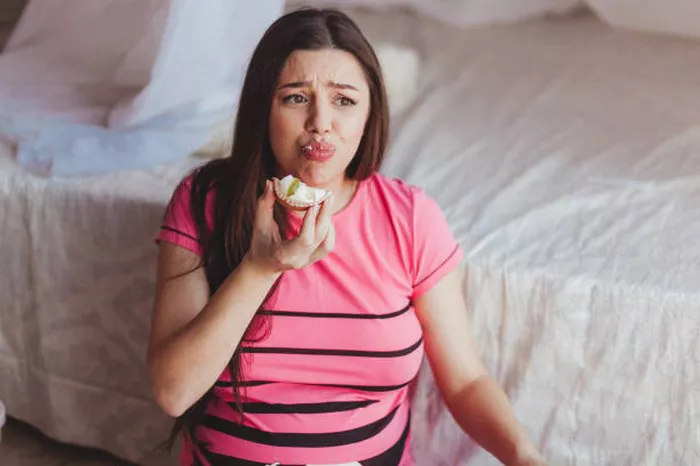Pregnancy is a time when dietary choices require extra thought and care. One common question among expectant mothers is whether prawn cutlets, a delicious seafood dish, are safe to consume during pregnancy. This article will explore the nutritional benefits of prawns, the potential risks, and guidelines for safely including prawn cutlets in a pregnancy diet.
Nutritional Benefits of Prawns
Prawns are a popular seafood choice due to their high nutritional value. They are packed with essential nutrients that can benefit both the mother and the developing baby.
1. High in Protein
Prawns are an excellent source of lean protein, which is vital during pregnancy for building and repairing tissues, supporting fetal growth, and maintaining maternal energy levels.
2. Rich in Omega-3 Fatty Acids
Omega-3 fatty acids, particularly DHA (docosahexaenoic acid), found in seafood like prawns, are crucial for the baby’s brain and eye development.
3. Low in Fat
Prawns are naturally low in saturated fat, making them a healthy choice for maintaining a balanced diet during pregnancy.
4. Packed with Vitamins and Minerals
Prawns contain essential nutrients such as:
Iron: Supports the production of red blood cells and helps prevent anemia.
Zinc: Aids in immune function and cell growth.
Vitamin B12: Crucial for nerve function and the formation of red blood cells.
Potential Risks of Eating Prawns During Pregnancy
While prawns offer numerous health benefits, there are risks associated with seafood consumption during pregnancy that should be carefully considered.
1. Foodborne Illnesses
Raw or undercooked prawns can harbor harmful bacteria or parasites such as Listeria monocytogenes or Toxoplasma gondii, which can lead to serious infections during pregnancy. These infections may result in complications like miscarriage, preterm labor, or stillbirth.
2. Mercury Levels
Seafood often contains traces of mercury, a heavy metal that can harm a developing baby’s nervous system. While prawns are considered low in mercury compared to other seafood, it’s important to moderate consumption.
3. Allergies
Shellfish, including prawns, are a common allergen. If you have a history of shellfish allergies, avoid prawns entirely during pregnancy to prevent adverse reactions.
Guidelines for Safely Eating Prawn Cutlets During Pregnancy
With proper preparation and moderation, prawn cutlets can be safely enjoyed during pregnancy. Here are some essential guidelines:
1. Choose Fresh or High-Quality Prawns
Always purchase prawns from reputable sources to ensure they are fresh and safe for consumption.
Avoid prawns that smell off or have a slimy texture, as these are signs of spoilage.
2. Cook Thoroughly
Prawns should be cooked to an internal temperature of 145°F (63°C).
Properly cooked prawns turn opaque and pink, with a firm texture.
Ensure that the cutlets are cooked evenly, especially if they are breaded or fried.
3. Avoid Cross-Contamination
Use separate cutting boards and utensils for raw and cooked prawns to prevent the spread of harmful bacteria.
Wash hands, surfaces, and equipment thoroughly after handling raw seafood.
4. Limit Portion Sizes
Stick to recommended seafood consumption guidelines, which suggest up to 2-3 servings (8-12 ounces) of low-mercury seafood like prawns per week.
5. Be Mindful of Ingredients in Prawn Cutlets
Check for added ingredients in the batter or breading, such as raw egg or excessive salt, which may not be suitable during pregnancy.
Preparing Healthy Prawn Cutlets
Prawn cutlets can be a nutritious addition to your pregnancy diet if prepared in a healthy manner. Here are some tips for a healthier version:
1. Use Minimal Oil
Instead of deep-frying, consider baking or air-frying the cutlets to reduce unhealthy fat content.
2. Choose Whole-Grain Breading
Opt for whole-grain breadcrumbs to increase fiber content and nutritional value.
3. Add Nutrient-Dense Ingredients
Incorporate spices like turmeric or herbs such as parsley for added flavor and health benefits.
4. Serve with a Balanced Side Dish
Pair prawn cutlets with a side of steamed vegetables or a fresh salad for a complete, nutritious meal.
Signs to Watch For After Eating Prawns
If you choose to include prawn cutlets in your pregnancy diet, it’s important to be aware of any adverse reactions:
Allergic Reactions: Symptoms may include itching, swelling, or difficulty breathing. Seek medical attention immediately if these occur.
Food Poisoning: Signs such as nausea, vomiting, diarrhea, or fever should prompt a visit to your healthcare provider.
Alternative Protein Sources for Pregnancy
If you are unsure about including prawns in your diet or prefer to avoid them, there are many other protein-rich foods to consider:
Chicken and Turkey: Lean meats that are high in protein and iron.
Eggs: Packed with protein, vitamins, and essential choline.
Legumes: Beans, lentils, and chickpeas offer plant-based protein and fiber.
Tofu and Tempeh: Great vegetarian options rich in protein and calcium.
Consulting Your Healthcare Provider
Before making significant dietary changes during pregnancy, it’s always best to consult your healthcare provider or a registered dietitian. They can provide personalized recommendations based on your medical history, dietary preferences, and nutritional needs.
Conclusion
Prawn cutlets can be a safe and nutritious part of a pregnancy diet when prepared and consumed correctly. By following safety guidelines such as cooking thoroughly, avoiding cross-contamination, and moderating portion sizes, you can enjoy this seafood delicacy while minimizing potential risks.
As with any dietary choice during pregnancy, staying informed and consulting your healthcare provider will help ensure the health and well-being of both you and your baby. With careful preparation, prawn cutlets can be a delightful addition to your pregnancy meals.
You Might Be Interested In:


